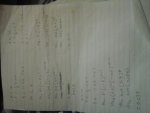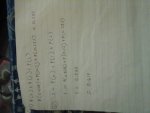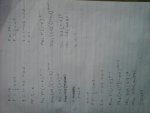lazarusimeon
New member
- Joined
- Aug 19, 2016
- Messages
- 6
(b) Suppose that a salesperson succeeds in making a salewith one in every three potential customers contacted.During a particular week, ten new potentialcustomers are contacted. Find the probability that thesalesperson will succeed in making: (i) More than two sales. (5 marks)(ii) At least two sales. (5 marks)(c) On average, three people per hour enter a furnitureshop. In any given hour, find the probability thatmore than three people will enter the shop
Last edited by a moderator:




